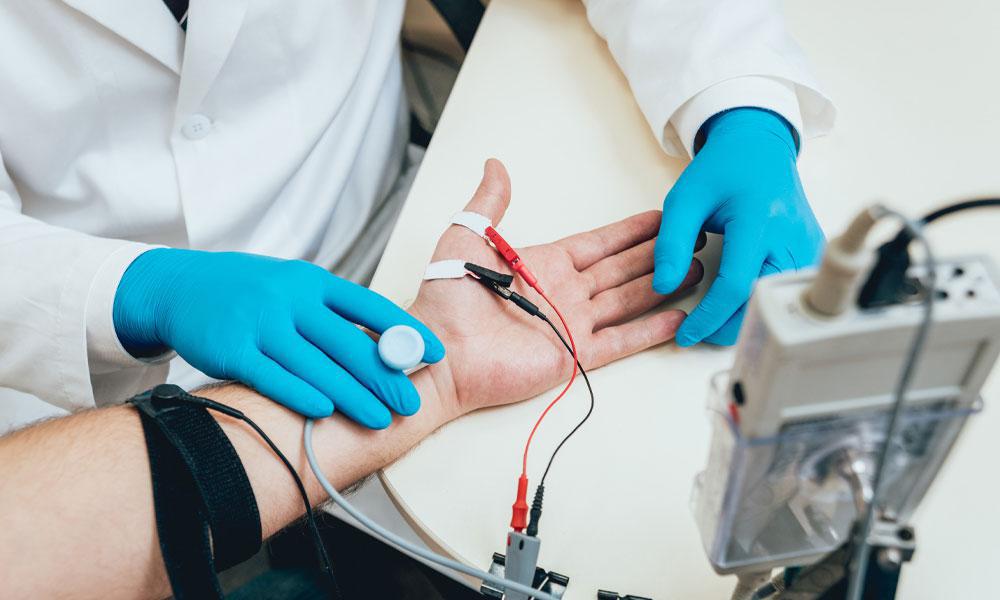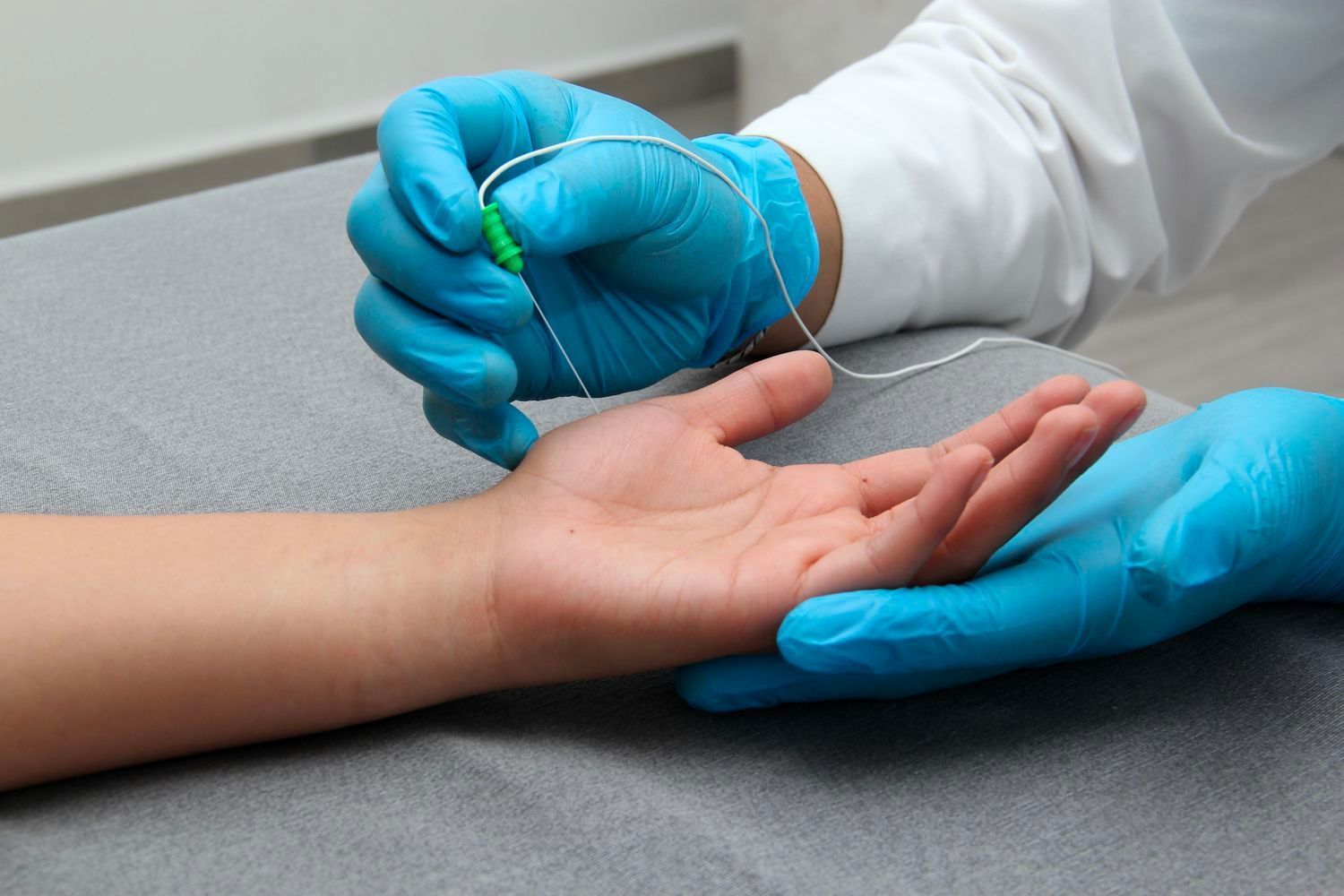EEG stands for electroencephalogram, a test used to evaluate and measure the electrical activity in the brain. EEGs use small discs called electrodes that are placed on the scalp. These electrodes pick up tiny electrical impulses in the brain and transmit them via wires to a machine that creates a graph depicting the activity.
EEGs are noninvasive and painless. Measurements of the skull are taken first to determine the optimal placement of the electrodes, then the skin in these areas may be carefully cleaned of oils to enable the electrodes to adhere better. In some cases, the electrodes may be attached to a close-fitting cap instead of directly to the scalp. Then, the electrodes are connected to the EEG machine using a series of wires. EEGs may be conducted while the patient is awake or during sleep. During the test, patients may be asked to open and close their eyes, read or perform other simple activities to measure the brain’s activity. EEGs performed on patients who are awake typically take about an hour.
EEGs are used to diagnose an array of issues related to the brain, including: Epilepsy and other seizure disorders; Brain tumors; Encephalopathy (brain dysfunction); Encephalitis (brain inflammation); Stroke; Dementia; Brain injury and Sleep disorders.

